Gordon Ritchie | April 26, 2024
After the shock news that came out on Wednesday 24 April, explaining that Bimota and Kawasaki would join forces to race in WorldSBK in the 2025 season, the official press release left a trail of questions in its wake.
After a request for more information from Kawasaki they clarified some – if not all – of those questions.
Whatever new bike comes from Europe and Japan joining forces in 2025, it will not be the current Bimota KB4.
The current KRT structure, based in Barcelona but with the bike, technology and most of the budget supplied direct from Japan, appears to be moving over to the new project largely en masse. But it’s not 100 percent certain yet if this means every single member of staff will go. “It is expected that the majority of current KRT WorldSBK staff will be appear within the new team,” said Kawasaki.
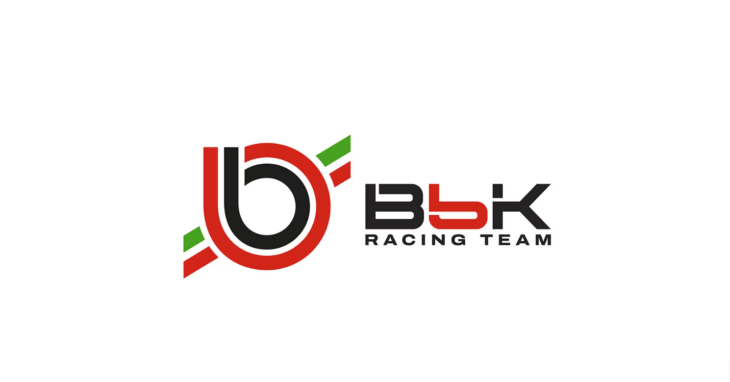 Kawasaki’s WorldSBK focus will now shift to its partnership with Bimota.
Kawasaki’s WorldSBK focus will now shift to its partnership with Bimota.
The next salient question seemed to be if there would still be a Kawasaki Factory Team in 2025, using the 2024 Ninja ZX-10RRs official bikes as they are? (They are still winning races and securing podiums, after all).
The Kawasaki answer came back as, “This is not yet decided but the majority of performance related items will no longer be usable at the end of the season as they are ‘life-timed’ and therefore are not safely usable beyond their set usage limit.”
Whatever may or may not be left behind in green from head-to-toe after the new Italian/Japanese amalgam has been created, Kawasaki’s official 2025 team in WorldSBK will be the ‘Bimota by Kawasaki’ one outlined in their recent press release.
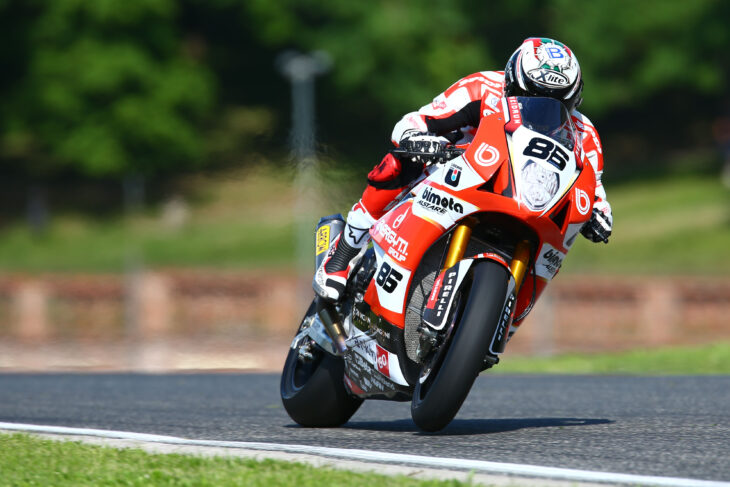 Bimota’s last foray into WorldSBK was 2013 on a bike powered by a BMW S 1000 RR engine with riders Ayrton Badovini (pictured) and Christian Iddon.
Bimota’s last foray into WorldSBK was 2013 on a bike powered by a BMW S 1000 RR engine with riders Ayrton Badovini (pictured) and Christian Iddon.
“As an official or so-called ‘factory’ entry, the new Bimota by Kawasaki Racing Team will be the official entry in WorldSBK,” confirmed the answer from Kawasaki. “Kawasaki will be fundamentally involved via engine and technology supply plus the unequalled experience of its existing racing staff. With nearly four decades of experience in WorldSBK, Kawasaki will focus this knowledge on the new project while Bimota contributes their acknowledged skill in chassis design and innovation while aligning the design and technology with future production machines available for sale to the public in Bimota dealerships.”
There is, as it stands, no answer regarding what Kawasaki’s Suzuka 8 Hours machine may be in 2025.
And it also seems that, despite this new arrangement in WorldSBK, it is not the end of Kawasaki’s own Ninja ZX-10RR flagship Superbike model. When asked about this, Kawasaki replied, “No plans to change Ninja development. The Ninja ZX-10RR is already like a type of WorldSBK ‘signature model’ and this image will continue. With this new project Kawasaki is still involved with WorldSBK activity and we believe this new challenge will add to the interest in Kawasaki and Bimota. We do not expect the profile and sales of Ninja models to be affected.”
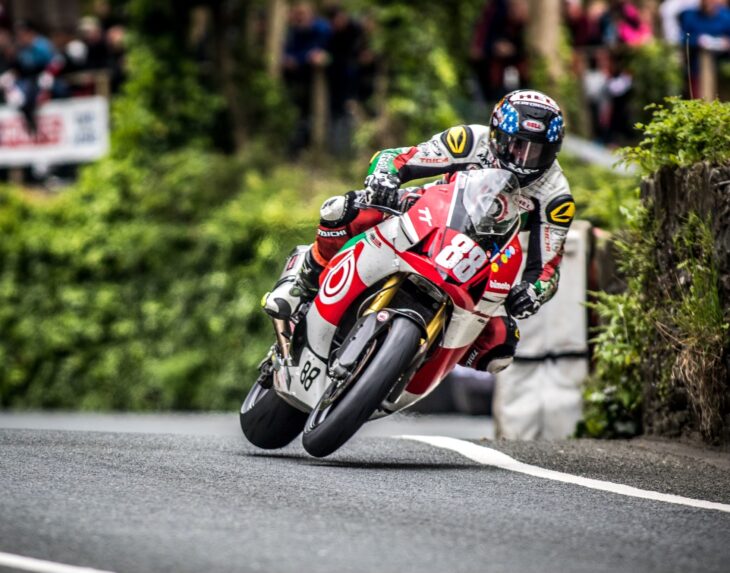 Bimota’s racing expereince with the BMW-powered racer included stints at the Isle of Man TT with American Brandon Cretu.
Bimota’s racing expereince with the BMW-powered racer included stints at the Isle of Man TT with American Brandon Cretu.
It’s certain that more and more details of the new project will come to light as and when Bimota and Kawasaki decide to release them, but so far this is the latest update after the initial press release was published.
Overall, the reasons for Kawasaki making this move at this time make more sense the more you look at them.
First off, there is almost no way Kawasaki would make a ‘Ducati-beater’—a super-special road bike for the track, priced at the current limit of over 40,000 Euro. Kawasaki is obviously a big and respected player in motorcycling, with a string of landmark and game-changing models produced throughout its long history. And in the H2R supercharged four-cylinder, Kawasaki has that unique non-racing high performance flagship already.
In WorldSBK terms, Kawasaki has never quite gone to town with its homologations specials in the extreme way that the Italians or even Honda with its RC and SP models has. Even Kawasaki, with eight WorldSBK riders championships behind it since 1988, has not had to.
Conversely, Kawasaki probably doesn’t have the ‘cachet’ to produce an all-new Ducati-style wonderbike and expect to sell in any numbers. Sell to race terms, sure. But to very few well-heeled ‘collectors’ who buy things like…maybe… Bimotas? Seems incredibly unlikely that any Kawasaki would have the same gold chip appeal as a Bimota Kawasaki.
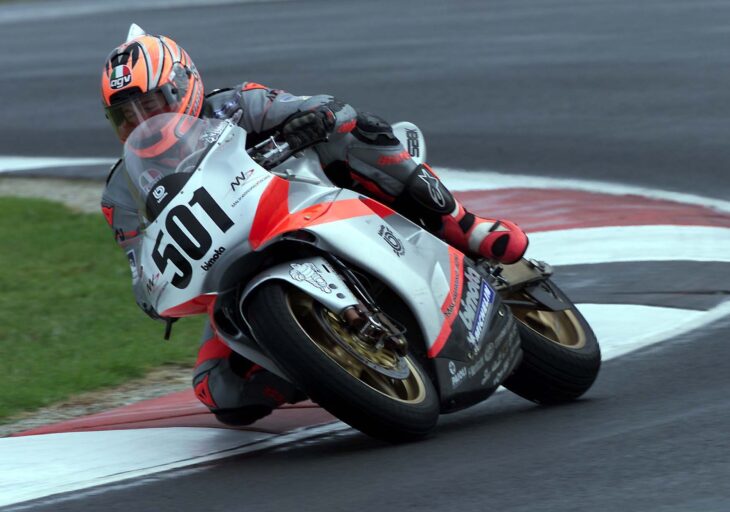 Anthony Gobert on his way to Bimota’s most famous (and most recent) win in WorldSBK at Phillip Island in 2000 on the Suzuki TLR 1000-powered SB8-R.
Anthony Gobert on his way to Bimota’s most famous (and most recent) win in WorldSBK at Phillip Island in 2000 on the Suzuki TLR 1000-powered SB8-R.
Almost everybody who makes a WorldSBK ‘wünderbike’ is doing so at a loss-per-unit. If you are Ducati, selling Monsters, Multistradas and all kinds of bikes nowadays, that performance/racing element is still the magic desmo dust, sprinkled on even the least expensive bike from Borgo Panigale. Ducatis have to be exotic and successful in racing, and all else follows on through the always high performance model range.
Despite still winning in WorldSBK this season, the Ninja ZX-10RR is a distinctly venerable platform, with an old-school engine design and conservative bore x stroke ratio. It has some unique touches, but it is not achingly beautiful or super-trick compared to some.
Making a completely ground-up new 1000cc Ninja, with Ducati or BMW matching bore x stroke figures, would be wildly expensive. And given the new rules coming in WorldSBK, maybe entirely pointless.
The existing engine should be enough for a while yet.
It seems a racing certainty that World SBK is not going to get any faster than it is, in terms of engine power at least, thanks to the new rules coming in for 2025. Fuel load reductions are already here, as are biofuel additives.
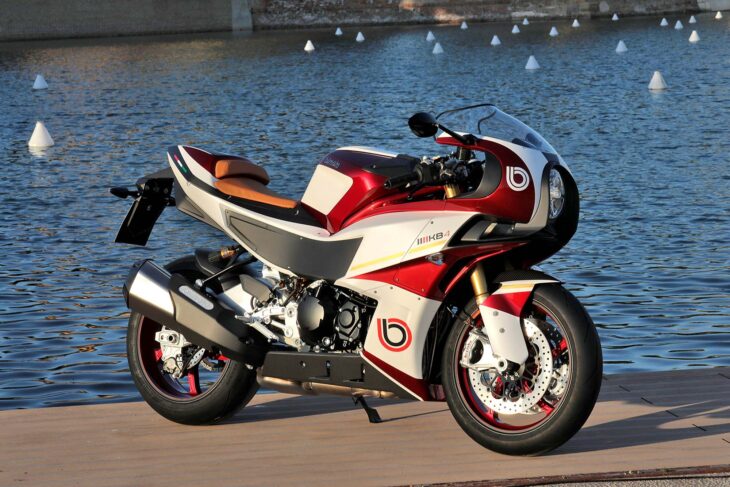 Beautiful as it is, the KB4 will not be used as the new WorldSBK racer.
Beautiful as it is, the KB4 will not be used as the new WorldSBK racer.
Next year fuel flow will be used not just as a new kind of balancing tool but to outright limit the amount of fuel that gets into the combustion chambers every single power-stroke. Less fuel, less power, there is no way to bend the laws of physics. So Ducati/BMW/Honda building a new ‘roadbike’ with ten more horsepower may well happen, but it will not be able to be ten bhp more than its competitors in WorldSBK trim.
All of this means that the Kawasaki engine should still be competitive for a while in WorldSBK, whatever anyone else does for a homologation-special streetbike.
Follow the logic and Kawasaki has maybe just found a way to stay in WorldSBK, not leave it as the Ninja just gets too old to compete. Leaving is leaving – like Aprilia and Suzuki did – but this does not seem to be the case here.
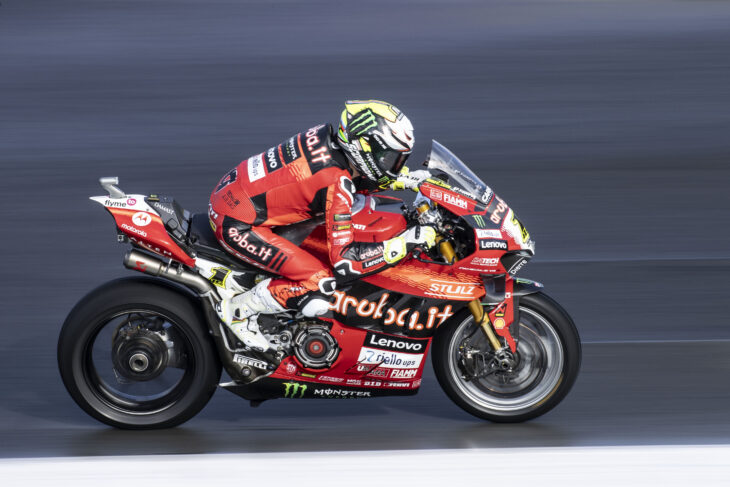 Kawasaki doesn’t have the interest in building a Ducati beater like Alvaro Bautista’s Panigale V4 R, but they have a back door entry with Bimota that’s more adept at building ultra-high end, bespoke production racers.
Kawasaki doesn’t have the interest in building a Ducati beater like Alvaro Bautista’s Panigale V4 R, but they have a back door entry with Bimota that’s more adept at building ultra-high end, bespoke production racers.
If the Bimota chassis expertise for track use is still as sharp as it once was, the other element of racetrack performance, the complete chassis package, could even be a potential improvement. With the current Ninja engine (500rpm more for them this year, and a much lighter engine inertia, remember) having a new lease of more powerful life, then this new BBK set-up in WorldSBK in 2025 may be right on the money.
Bimota/Kawasaki now has to reach a series of production targets to qualify for WorldSBK, but remember they are fundamentally building a rolling chassis only. The engine and electronics suite should just port over without too much fuss. We cannot imagine that Kawasaki has not already geared up its big Ninja engine production lines for more motors than chassis.
One half of the build ‘problem’ is already solved for BBK.
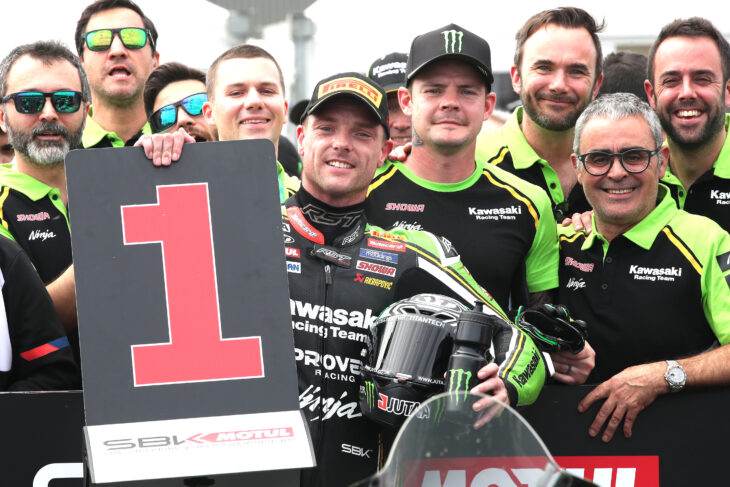 Almost all the boffins from the Spanish-based Kawasaki Racing Team will head to Bimota with funding from Kawasaki in Japan. No word yet on who the riders will be.
Almost all the boffins from the Spanish-based Kawasaki Racing Team will head to Bimota with funding from Kawasaki in Japan. No word yet on who the riders will be.
Historical evidence has shown that the engine on any new bike is the real hard bit to get absolutely right in WorldSBK. Ask Petronas. Or Benelli. Or Buell. Or even Bimota with the SB8-R’s fragile twin-cylinder Suzuki engine.
Bimota’s more recent foray into WorldSBK, using BMW S1000RR engines, provided good results on track for Christian Iddon and Ayrton Badovini (until a forced exit from the championship due to its own company issues).
With Kawasaki providing know-how in production engineering and probably extra budget, this latest foray into WorldSBK for Bimota is starting off on what looks like solid ground. Not least because seven-times riders WorldSBK champions Provec Racing (i.e. KRT team in Europe) will be running many aspects of the race effort.
Whatever the reality of the situation come 2025, yet another compelling storyline is about to be added to the WorldSBK story.
For more WorldSBK news and results, click here